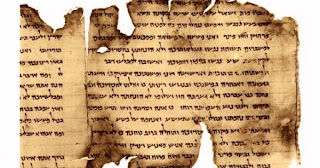The Dead Sea Scrolls - Session Four

Prayer and Worship in the Dead Sea Scrolls The discovery of so many prayers and liturgies at Qumran is significant. It fills in a huge gap in our understanding of prayer in Second Temple Judaism. Eileen Schuller has noted: “One thing that is distinctive is that the community of Qumran put their prayers into written from. This was in marked contrast to the practice of subsequent centuries in rabbinic Judaism which discouraged the setting down of prayer in writing ( t. Shabb. 13.4). One of the difficulties in studying Jewish prayer (particularly as it developed after the destruction of the Temple in AD 70) is that although there are scattered reference, and occasionally even the actual words of blessings in the Mishnah and in the Talmuds, prayer was basically oral. As mentioned earlier, the earliest preserved copies of the Siddur [the Jewish Prayer Book] are dated only to the ninth century [AD/CE]. The scrolls fill in a stage in the development of Jewish prayer-forms that previ
